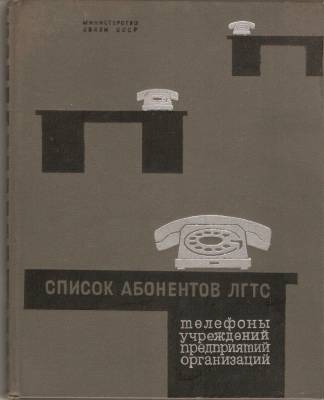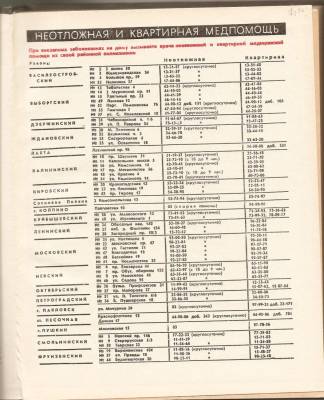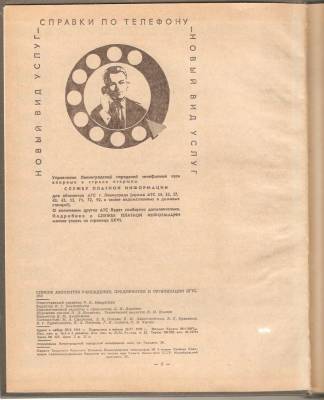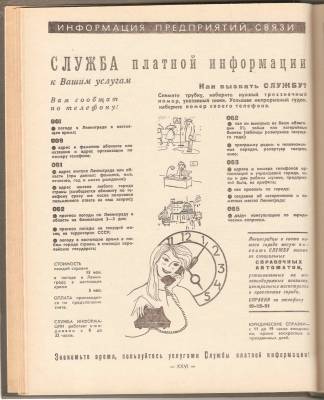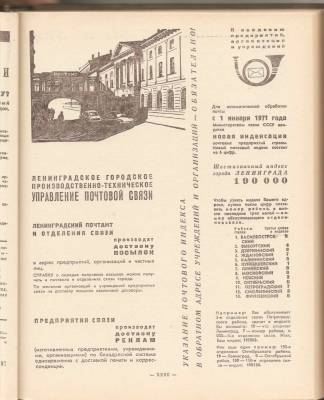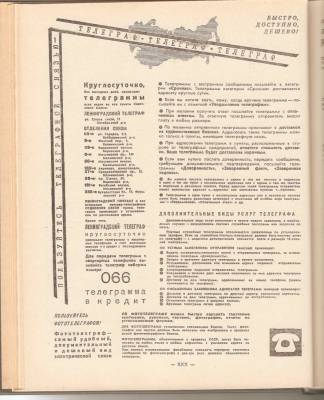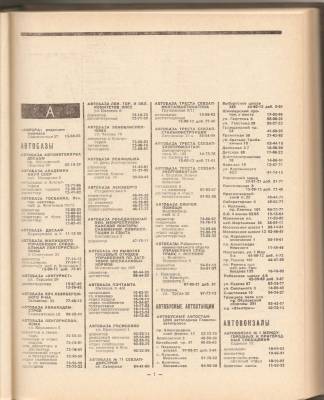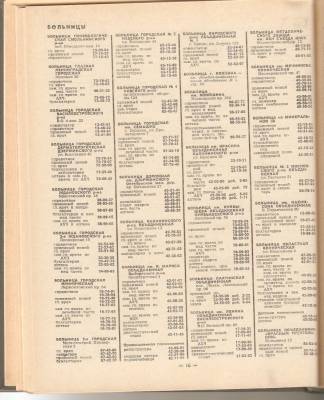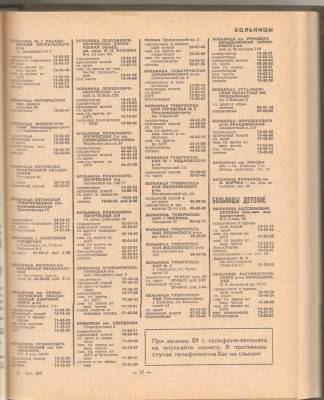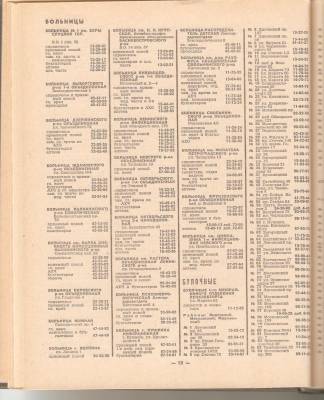How to Interface a Soviet Багта-50 1955 Rotary-Dial Telephone with the Global Mobile Telephony Network
Багта-50
On the way back from one of
several trips to Russia
I purchased a telephone at a flea market in
Estonia.
As you can see from these pictures, I also picked up
some aluminum statues of Vladimir Ilych Lenin.
The telephone was a
Багта-50
(that is, Bagta-50),
built in the Soviet Union in 1955.
According to what was written in crayon or wax pencil
on a tightly folded piece of paper inside the phone,
it had received its most recent maintenance in 1968.
I used this on a
POTS
(Plain Old Telephone Service)
landline connection for a number of years, but in 2007 I
dropped the landline and went all-mobile.
That was useful in some ways, but meant that the
Багта-50
was no longer usable due to shortcomings in
the GSM system design.
Until I finally got around to interfacing it to the
mobile network....

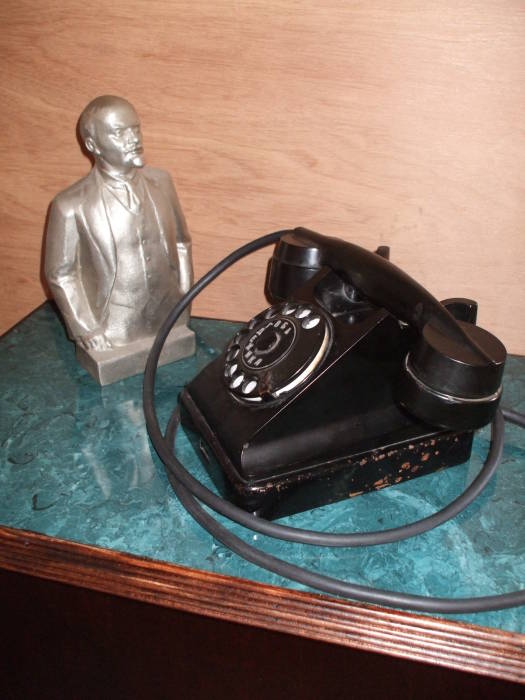
Багта-50 Exterior
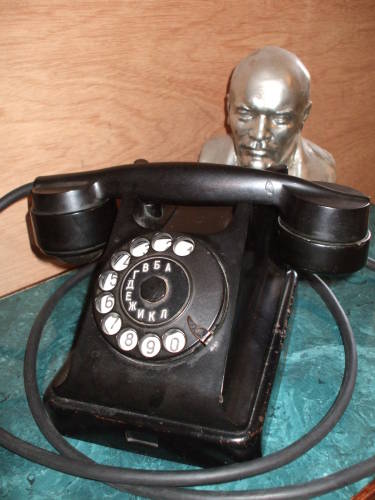
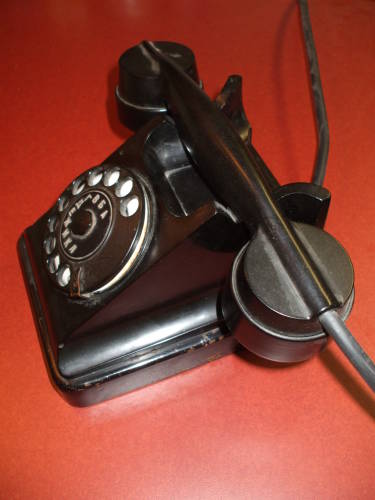
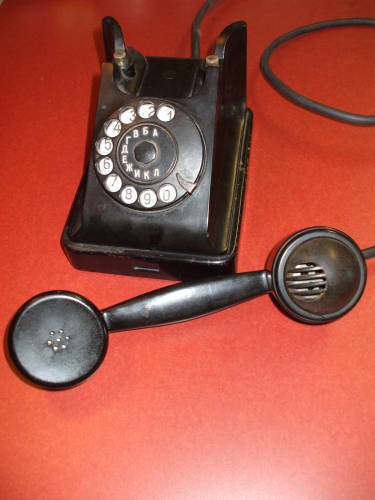

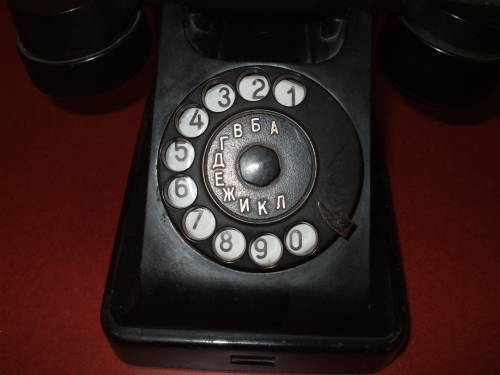
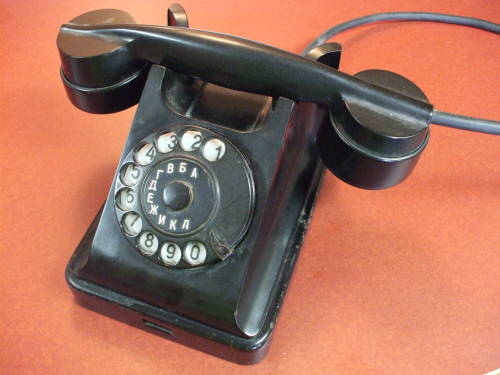
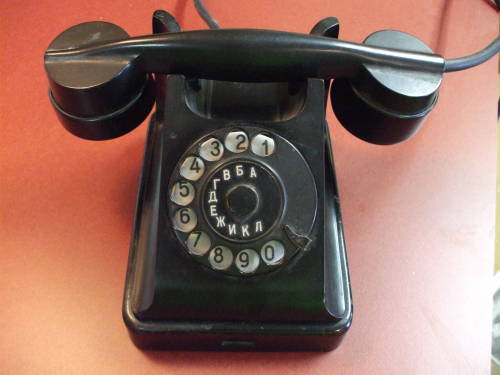
Багта-50 Handset
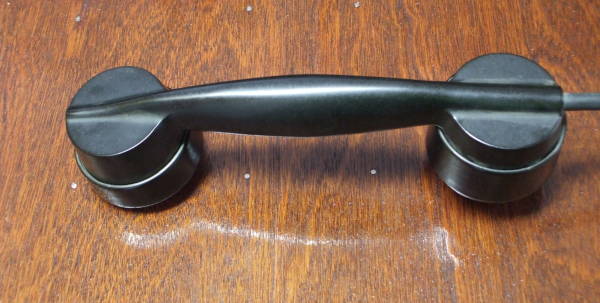
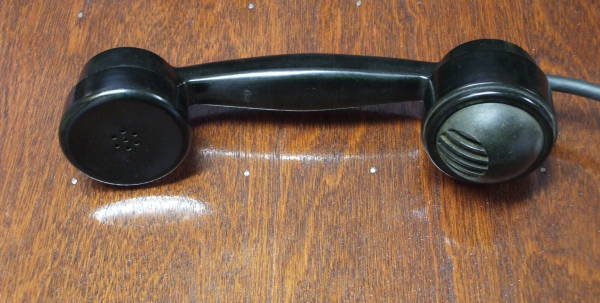
This shows the earpiece (at left) and mouthpiece (at right) within the handset.
The original handset cord was ruined, the insulation and the outer jacket were rotting away. I replaced it with heavy 3-conductor cable suitable for 20-amp power service.
Too large, clumsy and unwieldy for service as a handset cord — exactly what was needed for authenticity!
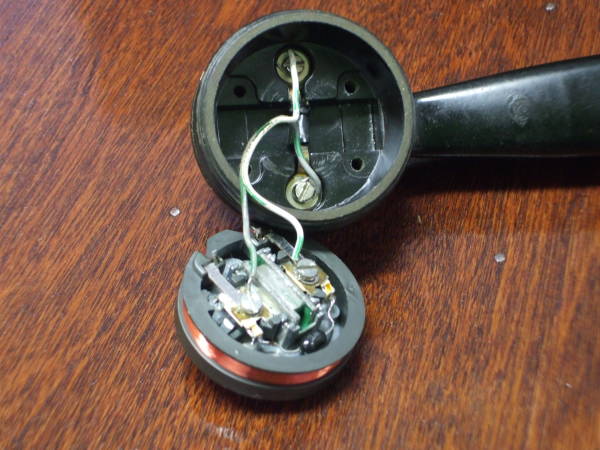
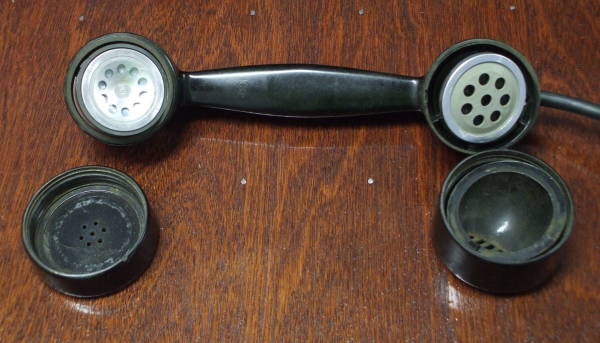
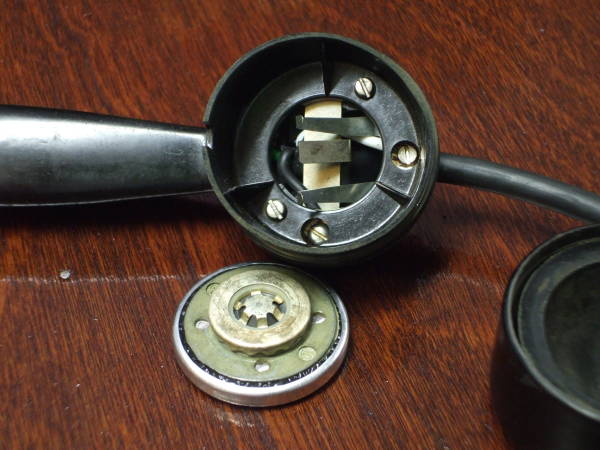
Багта-50 Interior
Here you see the circuit diagram found on the inside of the bottom plate. Click here or on the image for a larger version.
The images here and below show the interior of the phone, inside the base plate.
You can see both the terminal strip and the ringer with its two brown wrapped solenoids. The tightly rolled maintenance ticket was slipped underneath the ringer coils.
The useful terminals are labeled on the strip as:
| МГ | М | Л2 | Л1 | ||
| Т |
The labeling on the schematic only partially agrees. Disagreement between schematics and reality are familiar from my previous experiences with Soviet hardware.
| МГ | mouthpiece + |
| М |
earpiece + |
| Т |
mouthpiece and earpiece - |
| Л2, Л1 | to red/green POTS lines |

Interfacing the Багта-50 to the Mobile Network
There are at least two obvious and major drawbacks to the mobile telephony system:
- Incompatibility with rotary-dial signaling
- Difficulty of connecting to sophisticated hardware like the Багта-50
The first seems insurmountable without adding inappropriate complexity to the system. But both drawbacks can be worked around by interfacing the 1950s Soviet technology to an existing mobile device.
This was made more difficult because of the bizarre and proprietary connector used in the Nokia hardware design.
My phone was a Nokia 6086, type RM-260, GSM quad-band. For many years most Nokia handsets used the "Pop-Port" connector, described on the useful pinouts.ru site. The Pop-Port contacts are:
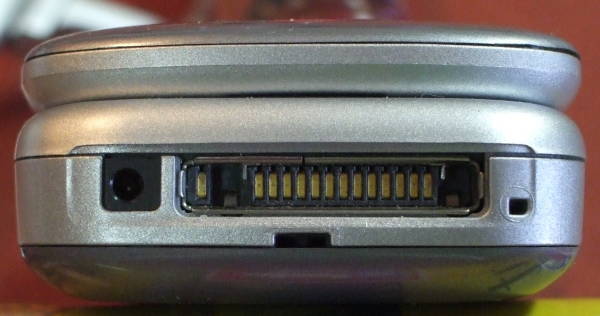

While in New York on a job, I went to Chinatown and bought a cheap Nokia-compatible earpiece from a sidewalk vendor along Canal Street. Audio almost as bad as the Багта-50 with none of the esthetic advantages. But it provided a Pop-Port connector for just US$ 5....
Tiny wires! And worse yet, they were the heinous Litz wires.
The cable has been split into the two jacketed components, and each has two enamel-insulated Litz wire bundles. A red/green pair for the earpiece and a gold/green pair for the microphone.
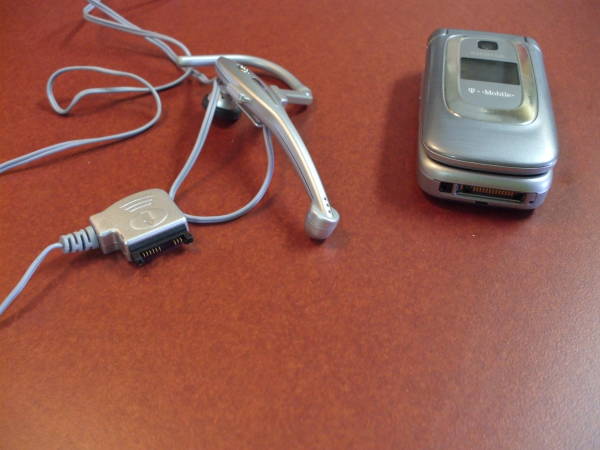
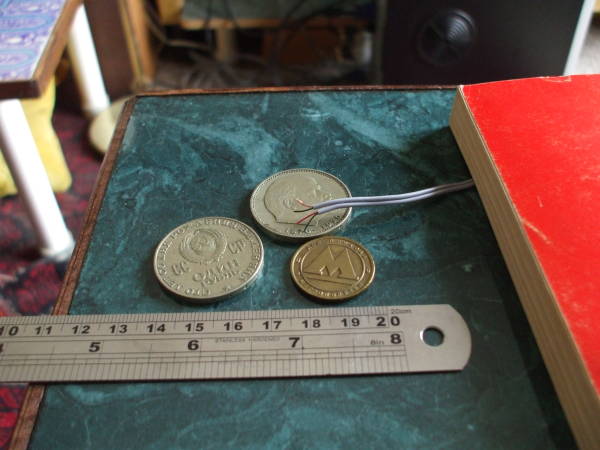
It can be very difficult to make good Litz wire connections. Here's what I did:
- Carefully wrapped the wires through and onto the terminals on a 1/8" / 3.2mm stereo plug
- Heated the plug contacts with a soldering iron
- Melted solder onto the terminals, immersing the Litz wire
- Kept the solder molten for several seconds to remove the enamel from the Litz wire and float it away



I had already determined that the connections on this Pop-Port connector were as shown below:

I drilled a 1/4" / 6.4mm hole in the phone body next to the existing hole for the handset cord. I then mounted a stereo jack there. The jack is barely visible to the left of the handset cable in the first picture below.


The short cable to the Nokia connector can just stay permanently attached to the Багта-50.
I tried leaving the handset connected to the impedance matching network in the telephone, and then connecting those terminals to the jack leading to the Nokia unit.
| Impedance |
Багта-50 (correct) |
Nokia (incorrect) |
| Microphone | 800Ω | 1200Ω |
| Earphone | 450Ω | 35Ω |
However, and I see this as yet another shortcoming of the mobile system design, the Nokia GSM unit could not handle the impedances presented by the Багта-50's impedance matching network. Here are the measured DC resistances for the Багта-50 and a Nokia earbud unit. You can see that the Nokia unit is pretty far out of spec.
So, I disconnected the handset lines from the internal terminal strip. Yes, that means that all I am really using is the handpiece itself. But it does keep the impedances close enough to keep the Nokia handset reasonably happy.
I initially had serious trouble with feedback caused by physical resonance of the Багта-50 handset coupled with the high gain of the Nokia external interface. Yet another drawback of the Nokia design! I solved that by packing some cotton gauze pads around both the earpiece and mouthpiece elements.
Initial reports indicate the audio quality is rather poor:
- Transmitted audio is seriously band-limited
- The audio has been described both as "very muffled" and "as if you were in a barrel"
- The feedback is still there in the form of occasional squeaks, although it no longer occurs as long squeals that lead to the connection being broken. Or at least not very often.
Therefore the performance is exactly as I had hoped!
Here it is in operation! In Soviet Union, phone calls you!

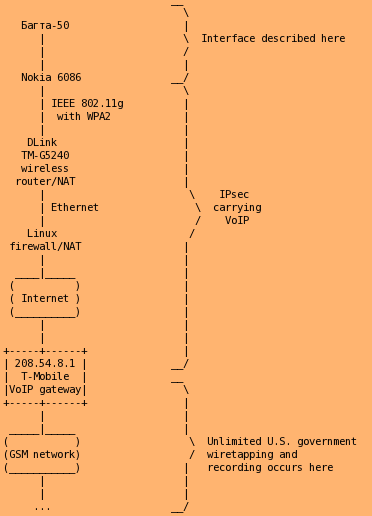
There is another benefit that I had not considered when I started the project — I can carry the entire unit somewhere and use it as a just-barely-portable phone. Despite appearances, it needs no wired connection.
Using T-Mobile's "Hotspot @Home" service, the Багта-50 can also be involved in an 802.11 wireless LAN and VoIP (Voice Over IP) networking.
The 1970 Leningrad Telephone Directory
The library in West Lafayette, Indiana had a 1970 Leningrad telephone directory at a recent book sale. Quite a bargain at just US$ 1.50! I have scanned the cover and some of the pages. Contact me if you need something looked up.
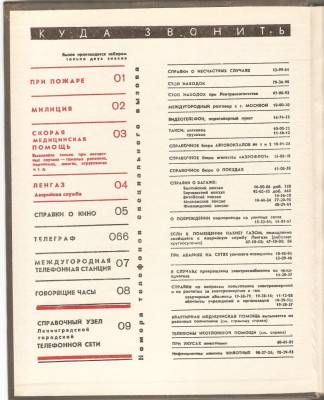
Inside the front cover, Emergency contacts: Fire (01), Militsiya or Police (02), Ambulance (03), LenGaz emergency services (04). Non-emergency: Movie schedules (05), Telegraph office (066), International telephone station (07), The Talking Clock (08), and the Information Center (09).

International calling details, where by "international" they mean "outside of Leningradskaya Oblast'".
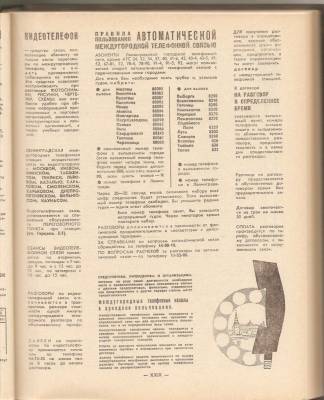
Videotelephone details. Really! According to this, videotelephone connections were available between Moscow, Kiev, Minsk, Tashkent, Tbilisi, L'vov, Kazan, Saratov, Smolensk, Kharkov, Dnepropetrovsk, Vilnius, and Kaunas.
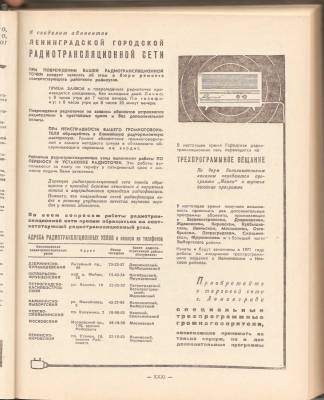
The "radio" system, or radiotranslayatsionnoy networks, used to distribute audio programming via carrier current. Your "radio" was pretty much just a small speaker plugged into the city speaker wires.
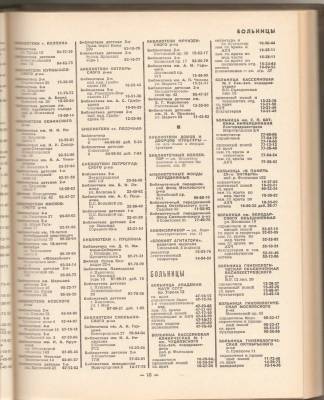
The start of the hospital (bol'nitsy) listings.
Why hospitals?
I did some work in a hospital there,
although the one where I worked
was built in the early 1970s and
isn't listed here.
Hospital of the Scientific Academy of the USSR
through
"October" Gynecological Hospital
Other Soviet / Mobile Telephony Projects and Багта / Bagta Information
Brano Meres added Bluetooth to a 1960s Soviet army telephone handpiece, although his site just has a single picture and no details of what he did or how.
Here are about the only other instances of Багта/Bagta telephone apparatuses that Google knows about:
Since that page says that "BAGTA" is an acronym for Bakelīta Automātiskais Galda Telefona Aparāts, and the page is hosted at http://forum.myriga.info/, and I bought mine in Estonia, I suspect that the BAGTA-50 is a Latvian phone.
Someone else merged a British rotary telephone with a DECT phone.
A number of people have asked me where they could purchase a Багта-50. Well, maybe two or three people. Anyway, outside of trying to find one at the same flea market outside Tallinn, Estonia, where I bought mine, I have no idea. However, at right you see a very a Багта-50-like telephone sitting on a display table outside an antique shop in Centro Storico, the historic old city, at the core of Napoli, Italy.

